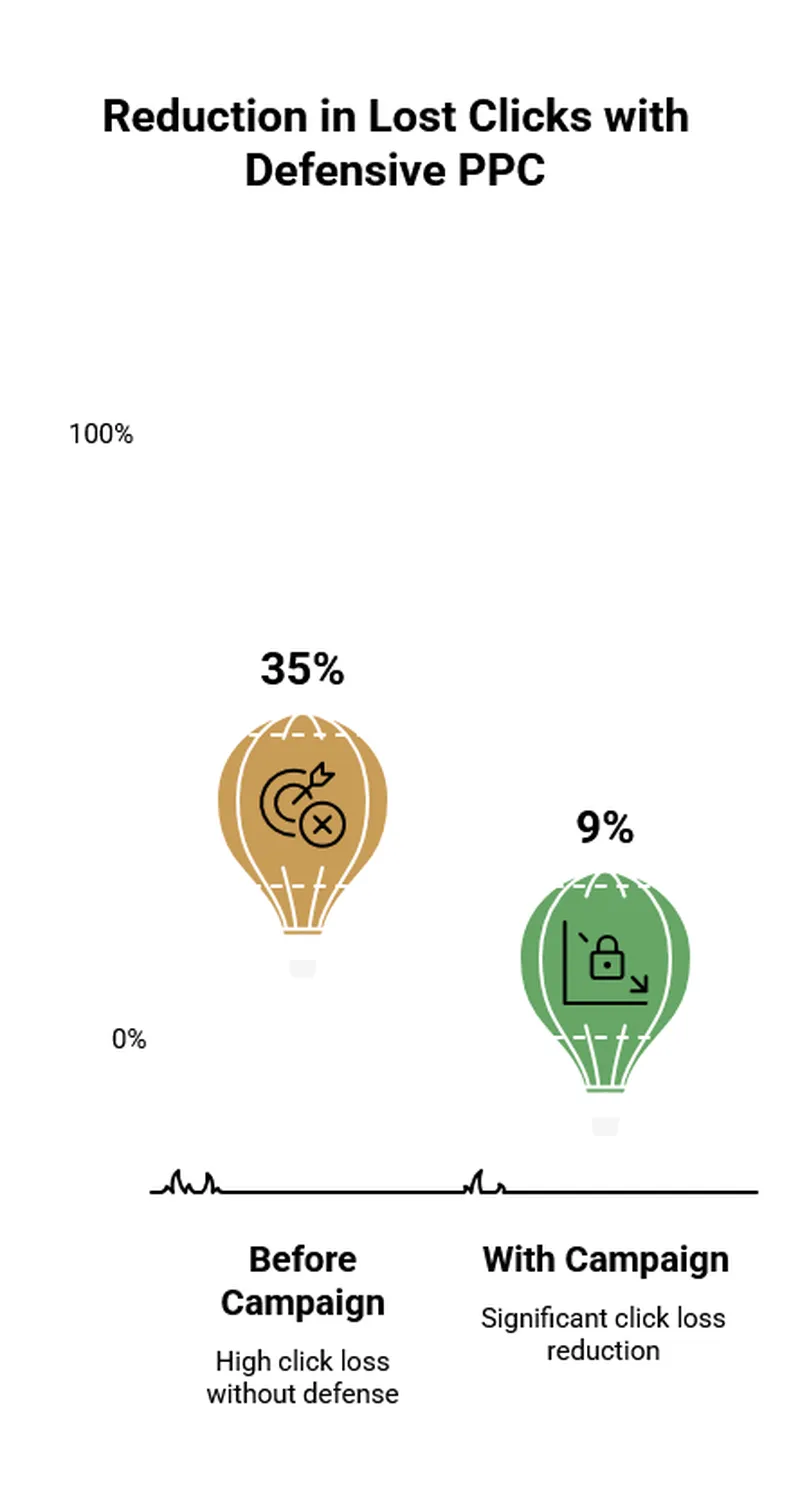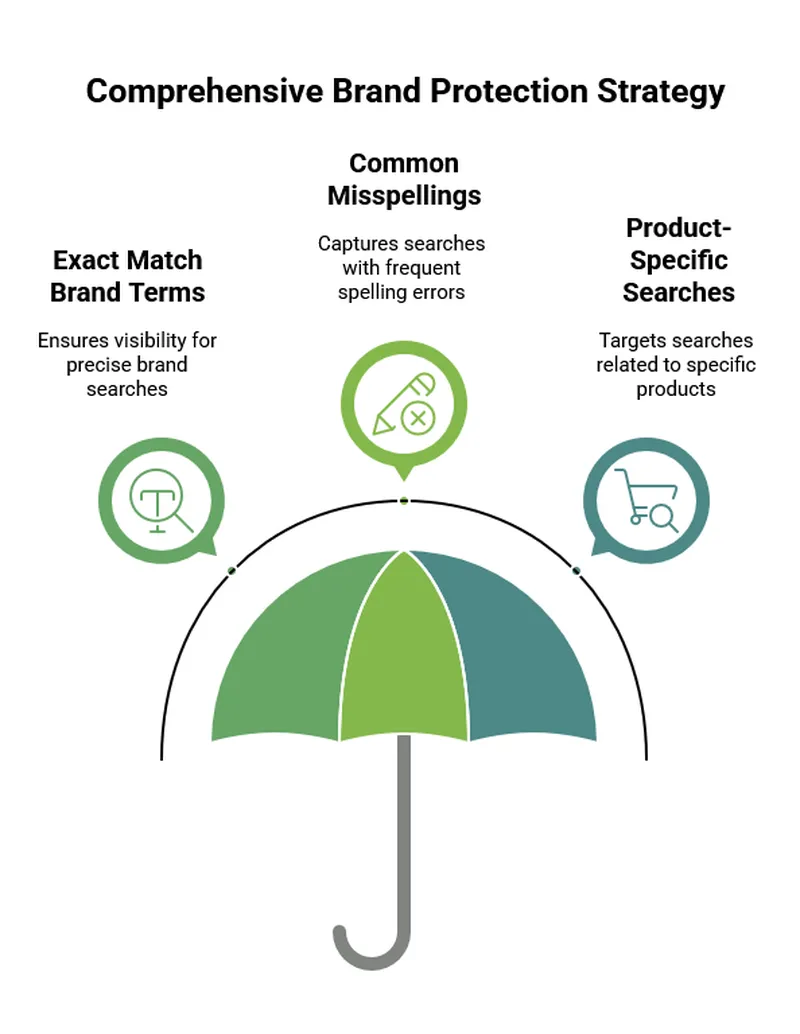
How and When to Use Defensive Amazon PPC
Table of Contents
Defensive Amazon PPC advertising has become a crucial strategy for protecting your brand’s market share on the world’s largest e-commerce platform. When shoppers search for your brand on Amazon, they demonstrate high purchase intent and trust in your products.
However, without proper defensive measures, competitors can intercept these valuable customers by bidding on your brand terms. Understanding when and how to implement defensive PPC strategies can mean the difference between maintaining your brand’s growth trajectory and losing market share to aggressive competitors.
Think of defensive PPC like a modern home security system that protects your most valuable asset - your brand reputation. Just as you wouldn’t leave your house unprotected in a busy neighborhood, leaving your brand terms undefended makes you vulnerable to competitor intrusion. The investment in defensive advertising acts as an insurance policy, protecting the brand equity you’ve worked so hard to build. This protection becomes particularly crucial as your brand gains recognition and market share on Amazon’s competitive marketplace.
Consider the real-world impact of defensive PPC through the lens of a premium kitchenware brand that recently implemented this strategy. Before launching their defensive campaign, competitors were capturing 35% of clicks on their brand searches, effectively siphoning away potential customers at the crucial moment of purchase intent. After implementing a comprehensive defensive strategy, they reclaimed 90% of these clicks and saw a 40% increase in brand-term sales. This dramatic improvement demonstrates the tangible value of well-executed defensive advertising.

Understanding When to Deploy Defensive PPC
Your brand’s position in the Amazon marketplace determines the optimal timing for implementing defensive PPC strategies.
Brand Recognition
Brand recognition signals serve as key indicators for when to begin defensive advertising. When your monthly brand search volume exceeds 1,000 searches, it signals that customers are actively seeking out your products by name. This milestone represents a critical threshold where defensive advertising becomes not just beneficial, but essential for protecting your market position.
Market Competition
The competitive landscape surrounding your brand plays a crucial role in determining the intensity of your defensive strategy.
Market competition analysis reveals that brands typically need to increase their defensive measures when competitor advertising on their terms increases by 20% or more. This often occurs during peak shopping seasons, when new competitors enter the market, or when existing competitors become more aggressive with their conquest advertising strategies. Understanding these patterns helps you adjust your defensive spending proportionally to the threat level.
Performance Metrics
Monitoring your brand’s performance metrics provides additional clarity on defensive timing.
When your branded search terms achieve conversion rates above 20%, they become particularly attractive targets for competitor advertising. Similarly, if you notice your click-through rates declining on brand searches, it often indicates increasing competitor presence in your brand space. These metrics serve as early warning signs that your brand requires stronger defensive measures.
Key Performance Metrics for Defensive PPC
Understanding and tracking the right metrics is crucial for defensive PPC success. Impression share serves as your primary defense indicator, showing how effectively you’re protecting your brand terms from competitor intrusion.
A healthy defensive campaign should maintain an impression share above 90% for branded searches, ensuring comprehensive coverage of your brand terms. Anything below this threshold suggests vulnerabilities in your defensive shield that competitors might exploit.
| Metric | Target Range | Why It Matters |
|---|---|---|
| Impression Share | 90%+ | Ensures brand visibility |
| Click-Through Rate | >35% | Indicates ad relevance |
| Conversion Rate | >25% | Shows customer intent |
| ACOS | 15-25% | Measures efficiency |
Click-through rates provide crucial insight into your defensive ads’ effectiveness at capturing customer attention. Strong defensive performance typically achieves click-through rates exceeding 35% on brand terms, significantly higher than non-brand advertising.
This elevated engagement level reflects both the high intent of brand searches and the effectiveness of your defensive positioning. When rates fall below this benchmark, it often signals either increasing competitor effectiveness or potential issues with your ad relevancy.
Conversion tracking reveals the ultimate impact of your defensive strategy on sales performance. Profitable defense campaigns should maintain conversion rates above 25% to justify their cost structure. This high conversion threshold reflects the qualified nature of brand searches and helps maintain profitable ACOS levels between 15-25%.
Regular monitoring of these metrics enables quick adjustments to bid strategies and budget allocations, ensuring optimal performance of your defensive campaign structure.
Implementing Effective Defensive Campaigns

Successful defensive PPC campaigns require careful structuring and strategic targeting to maximize their effectiveness. Campaign architecture forms the foundation of your defensive strategy, determining how well you can protect your brand terms while maintaining cost efficiency. The structure must account for exact match brand terms, common misspellings, and product-specific searches to create a comprehensive shield around your brand presence.
Brand term campaign development follows a systematic approach based on search intent and conversion potential. Your primary brand name and product names typically generate the highest conversion rates, often exceeding 35% when properly defended. These terms deserve the highest bid allocations and closest monitoring. Secondary brand terms, including common misspellings and brand-plus-category combinations, require moderate bid levels to maintain visibility while managing costs effectively.
Product defense strategies extend beyond simple brand term protection to include ASIN targeting and category defense. When implementing ASIN targeting, focus on your top-performing products first, as these typically face the most aggressive competitor advertising. Category defense becomes particularly important when you hold a leading position in specific product segments, where maintaining visibility can prevent competitor encroachment on your market share.
Optimizing Your Defensive Strategy
Maintaining effective defensive PPC campaigns requires consistent optimization and adjustment to changing market conditions.
Weekly Reviews
Weekly performance reviews form the cornerstone of successful campaign management. During these reviews, analyze search term reports to identify new competitor tactics, adjust bids based on performance data, and update negative keywords to prevent waste. This regular cadence of optimization ensures your defensive strategy remains responsive to market dynamics.
Monthly Reviews
Monthly strategic assessments provide opportunities for broader campaign refinement and competitive analysis. These deeper reviews should examine performance trends across your entire defensive campaign structure, identifying opportunities for expansion or areas requiring additional protection. Pay particular attention to changes in competitor bidding patterns, especially during peak shopping seasons when competition typically intensifies. These insights guide strategic adjustments to your defensive positioning and budget allocation.
The Long Term
Long-term success in defensive advertising requires balancing protection with profitability. While maintaining high impression share on brand terms is crucial, achieving this goal efficiently demands continuous refinement of your targeting and bid strategies. Focus on identifying the most valuable brand terms through conversion rate analysis, then adjust your defensive coverage accordingly. This data-driven approach ensures your defensive spending remains proportional to the actual threat level and potential return on investment.
Conclusion
Defensive Amazon PPC represents a critical investment in protecting your brand’s market position and customer relationships.
By carefully timing your defensive strategy implementation, structuring campaigns effectively, and maintaining rigorous performance monitoring, you create a robust shield around your brand terms. Remember that successful defensive advertising requires a proactive approach, adjusting tactics as market conditions change while maintaining focus on profitability and return on investment.
Through consistent application of these principles, you’ll build a sustainable defensive strategy that protects and enhances your brand’s presence on Amazon.